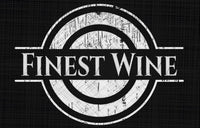Gaja: Modernity, Tradition and Passion in Italy
Angelo Gaja and his daughter, Gaia, share the family's wines from Piedmont and Tuscany
At just after 9:30 a.m. on the third day of the Wine Experience, attendees could have been excused if they had chosen to sleep in after two nights of Grand Tastings and a Friday filled with seminars. But the ballroom was packed, every seat taken.
Angelo Gaja was on stage.
Marvin R. Shanken, editor and publisher of Wine Spectator, remembers the first time the Piedmontese vintner—who revitalized the Barbaresco appellation—spoke to a Wine Experience audience. “Afterward, there was a line from the stage all the way to the back, of people lined up to shake his hand or say hello, as if he was the Pope.”
Gaja was joined this time by his eldest daughter, Gaia, who works with him, continuing the family business, which is now a five-generation tradition. Father and daughter discussed their three wineries and presented four iconic wines that displayed the qualities that have made their family a success—coupling modernity and tradition with passion.
Angelo commented that he enjoyed seeing so many young people at the Wine Experience because modernity is crucial for wine’s future. Fittingly, he started with a wine from his most modern project—Ca' Marcanda, on Tuscany’s coast in Bolgheri. Unlike their other two wineries, Ca’ Marcanda has no tradition. “In Italy,” explained Gaia, “when you’re very lucky, we say, ‘You discovered America,’ because every family has someone who traveled to America for a better life. The idea of America is hope, opportunity, a brighter future. In Bolgheri, we traveled to our America. It is the only place in Italy where there is no deep tradition of wine, a place that is very open-minded and welcoming, where we could start something new.” The Ca’ Marcanda Bolgheri Camarcanda 2009 (92 points, $165) is certainly less traditional for Italy—a blend of Merlot, Cabernet Sauvignon and Cabernet Franc.
The next wine had more history. Gaja bought a property in Montalcino in 1994 called Pieve de Santa Restituta, home to a centuries-old church. As Gaia explained, her father was inspired by the birth of her younger brother, Giovanni. “My father went a little crazy, he was so happy.” Though a newcomer to Montalcino, Angelo had the luxury of not needing to prove himself. He released no wines from the 2002 and 2003 vintages, because tough weather impacted quality. The Pieve Santa Restituta Brunello di Montalcino Sugarille 2006 (94, $170) clearly demonstrated that commitment to excellence.
The next two wines took the audience to Gaja’s home in Piedmont. Representing a wine his family has produced for more than a century was his just-released Gaja Barbaresco 2010 (not yet rated). “It’s not a wine of me and my father,” explained Angelo. “It’s a wine of my grandfather and his father. It shows my passion for my family.”
The Gaja Langhe Sperss 1998 (94, $225) came from a vineyard his father, Giovanni, worked in as a young man, a high plot in Serralunga, in Barolo. When Angelo had the chance to buy it in the '80s, he dubbed it Sperss, or nostalgia, for his father’s memories of its quality.
Gaja has an image of modernity, but at heart it is a family business. “Parents need to teach their children about wine,” Angelo said, recounting how his father served him a small glass at Easter dinner when he was 14, over his grandmother’s objections. “‘It’s important,’ my father said."
